Locomotor Activity of Ixodes ricinus Females in 900 MHz Electromagnetic Field
Abstract
:1. Introduction
2. Materials and Methods
2.1. Model Organism
2.2. Experimental Setup
2.2.1. Radiation-Shielded Tube Test
2.2.2. Source of Radiation for RST
2.2.3. Experimental Procedure of RST
2.2.4. Radiation-Shielded Circular Open-Field Arena
2.2.5. Source of Radiation for Circular Arena
2.2.6. Experimental Procedure of Circular Arena
2.2.7. Anechoic Chamber
2.2.8. Feature Extraction
2.2.9. Statistical Analysis
3. Results
3.1. Radiation-Shielded Tube Test
3.2. Radiation-Shielded Circular Open-Field Arena
4. Discussion
5. Conclusions
Author Contributions
Funding
Institutional Review Board Statement
Informed Consent Statement
Conflicts of Interest
References
- Huber, R.; Treyer, V.; Borbély, A.A.; Schuderer, J.; Gottselig, J.M.; Landolt, H.-P.; Werth, E.; Berthold, T.; Kuster, N.; Buck, A.; et al. Electromagnetic Fields, Such as Those from Mobile Phones, Alter Regional Cerebral Blood Flow and Sleep and Waking EEG. J. Sleep Res. 2002, 11, 289–295. [Google Scholar] [CrossRef]
- O’Dea, S. Smartphone Users 2020. Available online: https://www.statista.com/statistics/330695/number-of-smartphone-users-worldwide/ (accessed on 3 February 2021).
- Saily, D.M.; Sébire, D.G.; Riddington, D.E. GSM/EDGE: Evolution and Performance; John Wiley & Sons: Hoboken, NJ, USA, 2011; ISBN 978-1-119-97297-6. [Google Scholar]
- Balmori, A. Electromagnetic Radiation as an Emerging Driver Factor for the Decline of Insects. Sci. Total Environ. 2021, 767, 144913. [Google Scholar] [CrossRef] [PubMed]
- Balmori, A. Electromagnetic Pollution from Phone Masts. Effects on Wildlife. Pathophysiology 2009, 16, 191–199. [Google Scholar] [CrossRef] [PubMed]
- Cucurachi, S.; Tamis, W.L.M.; Vijver, M.G.; Peijnenburg, W.J.G.M.; Bolte, J.F.B.; de Snoo, G.R. A Review of the Ecological Effects of Radiofrequency Electromagnetic Fields (RF-EMF). Environ. Int. 2013, 51, 116–140. [Google Scholar] [CrossRef] [PubMed]
- Fojt, L.; Strašák, L.; Vetterl, V.; Šmarda, J. Comparison of the Low-Frequency Magnetic Field Effects on Bacteria Escherichia coli, Leclercia adecarboxylata and Staphylococcus aureus. Bioelectrochemistry 2004, 63, 337–341. [Google Scholar] [CrossRef]
- Cammaerts, M.-C.; De Doncker, P.; Patris, X.; Bellens, F.; Rachidi, Z.; Cammaerts, D. GSM 900 MHz Radiation Inhibits Ants’ Association between Food Sites and Encountered Cues. Electromagn. Biol. Med. 2012, 31, 151–165. [Google Scholar] [CrossRef]
- Levitt, B.B.; Lai, H.C.; Manville, A.M. Effects of Non-Ionizing Electromagnetic Fields on Flora and Fauna, Part 1. Rising Ambient EMF Levels in the Environment. Rev. Environ. Health 2021, 37, 81–122. [Google Scholar] [CrossRef] [PubMed]
- Levitt, B.B.; Lai, H.C.; Manville, A.M. Effects of Non-Ionizing Electromagnetic Fields on Flora and Fauna, Part 2 Impacts: How Species Interact with Natural and Man-Made EMF. Rev. Environ. Health 2021. [Google Scholar] [CrossRef]
- Levitt, B.B.; Lai, H.C.; Manville, A.M. Effects of Non-Ionizing Electromagnetic Fields on Flora and Fauna, Part 3. Exposure Standards, Public Policy, Laws, and Future Directions. Rev. Environ. Health 2021. [Google Scholar] [CrossRef]
- Panagopoulos, D.D.J.; Karabarbounis, A.; Margaritis, L.H. Effect of GSM 900-MHz Mobile Phone Radiation on the Reproductive Capacity of Drosophila melanogaster. Electromagn. Biol. Med. 2004, 23, 29–43. [Google Scholar] [CrossRef] [Green Version]
- Fauzi, A.; Corebina, A.D. The Effect of EMF Radiation Emitted by Mobile Phone to Insect Population Using Drosophila melanogaster as a Model Organism. In Proceedings of the 6th International Conference on Global Resource Conservation, University of Brawijaya, Malang, Indonesia, 30 November 2016. [Google Scholar]
- Lázaro, A.; Chroni, A.; Tscheulin, T.; Devalez, J.; Matsoukas, C.; Petanidou, T. Electromagnetic Radiation of Mobile Telecommunication Antennas Affects the Abundance and Composition of Wild Pollinators. J. Insect Conserv. 2016, 20, 315–324. [Google Scholar] [CrossRef]
- de la Fuente, J.; Antunes, S.; Bonnet, S.; Cabezas-Cruz, A.; Domingos, A.G.; Estrada-Peña, A.; Johnson, N.; Kocan, K.M.; Mansfield, K.L.; Nijhof, A.M.; et al. Tick-Pathogen Interactions and Vector Competence: Identification of Molecular Drivers for Tick-Borne Diseases. Front. Cell Infect Microbiol. 2017, 7, 114. [Google Scholar] [CrossRef] [PubMed] [Green Version]
- Rizzoli, A.; Silaghi, C.; Obiegala, A.; Rudolf, I.; Hubálek, Z.; Földvári, G.; Plantard, O.; Vayssier-Taussat, M.; Bonnet, S.; Špitalská, E.; et al. Ixodes ricinus and Its Transmitted Pathogens in Urban and Peri-Urban Areas in Europe: New Hazards and Relevance for Public Health. Front. Public Health 2014, 2, 251. [Google Scholar] [CrossRef] [PubMed]
- Korotkov, I.S.; Burenkov, M.S.; Burenkova, L.A.; Pichugin, V.I.; Chunikhin, S.P.; Engovatov, V.V. The reaction of the tick Hyalomma asiaticum (Acarina, Ixodidae) to 1- to 4-GHz microwaves. Med. Parazitol. 1996, 4, 28–31. [Google Scholar]
- Vargová, B.; Majláth, I.; Kurimský, J.; Cimbala, R.; Kosterec, M.; Tryjanowski, P.; Jankowiak, Ł.; Raši, T.; Majláthová, V. Electromagnetic Radiation and Behavioural Response of Ticks: An Experimental Test. Exp. Appl. Acarol. 2018, 75, 85–95. [Google Scholar] [CrossRef]
- Vargová, B.; Kurimský, J.; Cimbala, R.; Kosterec, M.; Majláth, I.; Pipová, N.; Tryjanowski, P.; Jankowiak, Ł.; Majlathova, V. Ticks and Radio-Frequency Signals: Behavioural Response of Ticks (Dermacentor reticulatus) in a 900 MHz Electromagnetic Field. Syst. Appl. Acarol. 2017, 22, 683–693. [Google Scholar] [CrossRef]
- Frątczak, M.; Vargová, B.; Tryjanowski, P.; Majláth, I.; Jerzak, L.; Kurimský, J.; Cimbala, R.; Jankowiak, Ł.; Conka, Z.; Majláthová, V. Infected Ixodes ricinus Ticks Are Attracted by Electromagnetic Radiation of 900 MHz. Ticks Tick-Borne Dis. 2020, 11, 101416. [Google Scholar] [CrossRef]
- Siuda, K. Kleszcze Polski (Acari: Ixodida): Systematyka i Rozmieszczenie; Kleszcze Polski (Acari: Ixodida)/Krzysztof Siuda; Polskie Towarzystwo Parazytologiczne: Wrocław, Poland, 1993; ISBN 978-83-901349-0-1. [Google Scholar]
- Balmori, A. Anthropogenic Radiofrequency Electromagnetic Fields as an Emerging Threat to Wildlife Orientation. Sci. Total Environ. 2015, 518, 58–60. [Google Scholar] [CrossRef]
- Crooks, E.; Randolph, S.E. Walking by Ixodes ricinus Ticks: Intrinsic and Extrinsic Factors Determine the Attraction of Moisture or Host Odour. J. Exp. Biol. 2006, 209, 2138–2142. [Google Scholar] [CrossRef] [Green Version]
- Herrmann, C.; Gern, L. Do the Level of Energy Reserves, Hydration Status and Borrelia Infection Influence Walking by Ixodes ricinus (Acari: Ixodidae) Ticks? Parasitology 2012, 139, 330–337. [Google Scholar] [CrossRef] [Green Version]
- Stout, R.J.; Rondinelli, M.P. Stream-Dwelling Insects and Extremely Low Frequency Electromagnetic Fields: A Ten-Year Study. Hydrobiologia 1995, 302, 197–213. [Google Scholar] [CrossRef]
- Wyszkowska, J.; Shepherd, S.; Sharkh, S.; Jackson, C.W.; Newland, P.L. Exposure to Extremely Low Frequency Electromagnetic Fields Alters the Behaviour, Physiology and Stress Protein Levels of Desert Locusts. Sci. Rep. 2016, 6, 36413. [Google Scholar] [CrossRef] [PubMed] [Green Version]
- Shepherd, S.; Jackson, C.W.; Sharkh, S.M.; Aonuma, H.; Oliveira, E.E.; Newland, P.L. Extremely Low-Frequency Electromagnetic Fields Entrain Locust Wingbeats. Bioelectromagnetics 2021, 42, 296–308. [Google Scholar] [CrossRef] [PubMed]
- Favre, D.; Johansson, O. Does enhanced electromagnetic radiation disturb honeybees’ behaviour? observations during new year’s eve 2019. Int. J. Res. Granthaalayah 2020, 8, 7–14. [Google Scholar] [CrossRef]
- Buczek, A.; Zając, Z.; Woźniak, A.; Kulina, D.; Bartosik, K. Locomotor Activity of Adult Dermacentor Reticulatus Ticks (Ixodida: Ixodidae) in Natural Conditions. Ann. Agric. Environ. Med. 2017, 24, 271–275. [Google Scholar] [CrossRef]
- Jackson, C.W.; Hunt, E.; Sharkh, S.; Newland, P.L. Static Electric Fields Modify the Locomotory Behaviour of Cockroaches. J. Exp. Biol. 2011, 214, 2020–2026. [Google Scholar] [CrossRef] [Green Version]
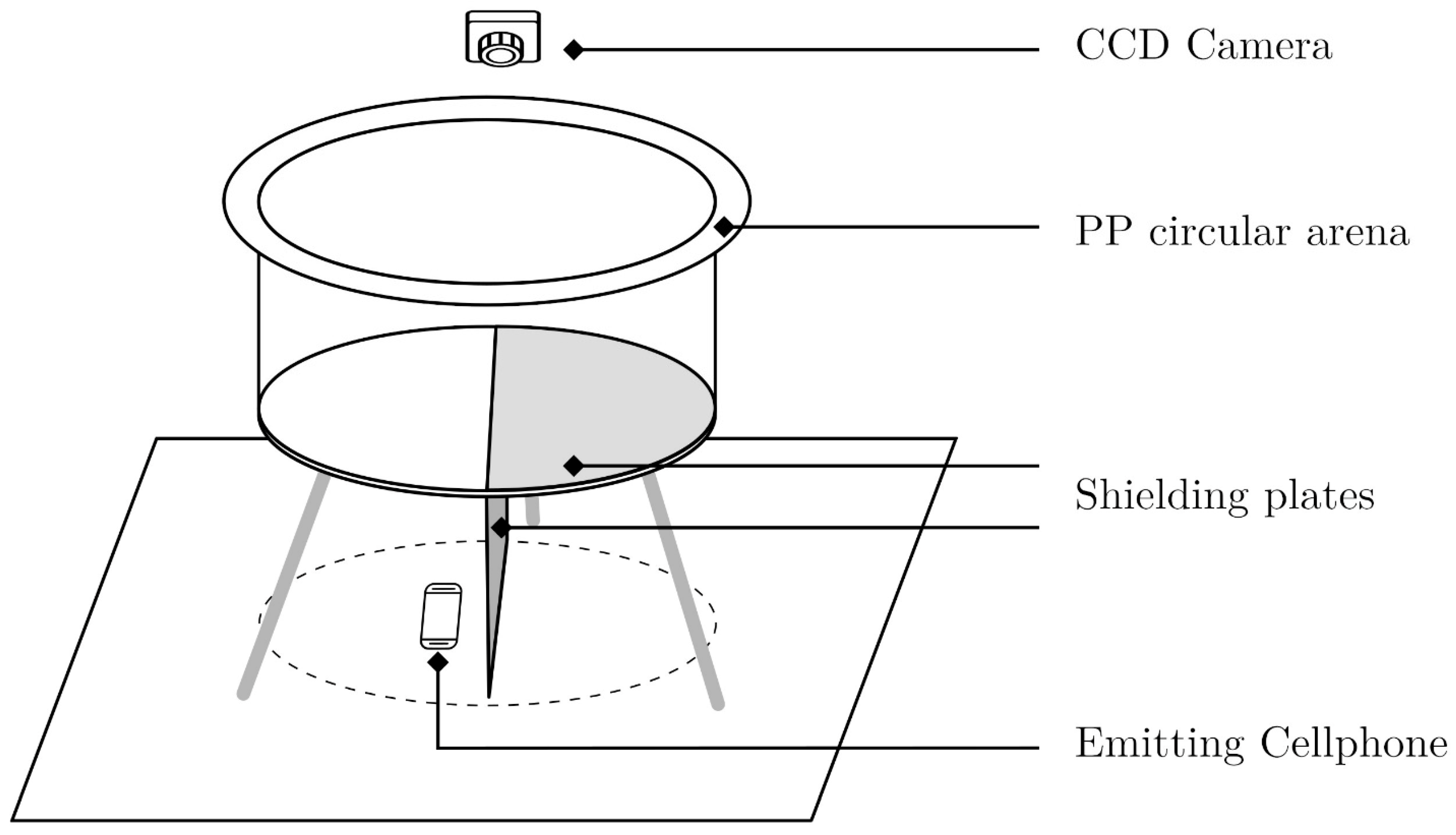
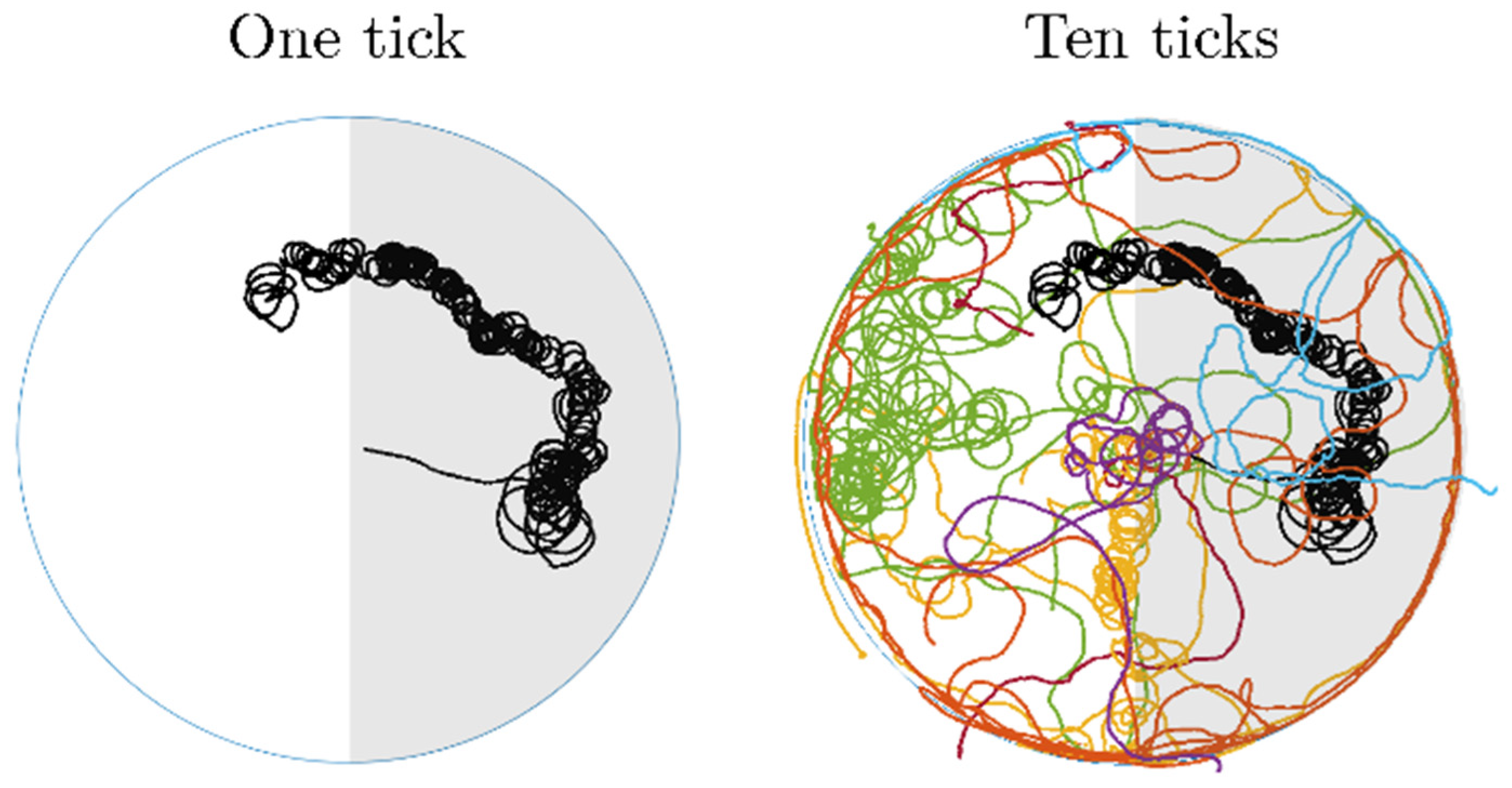
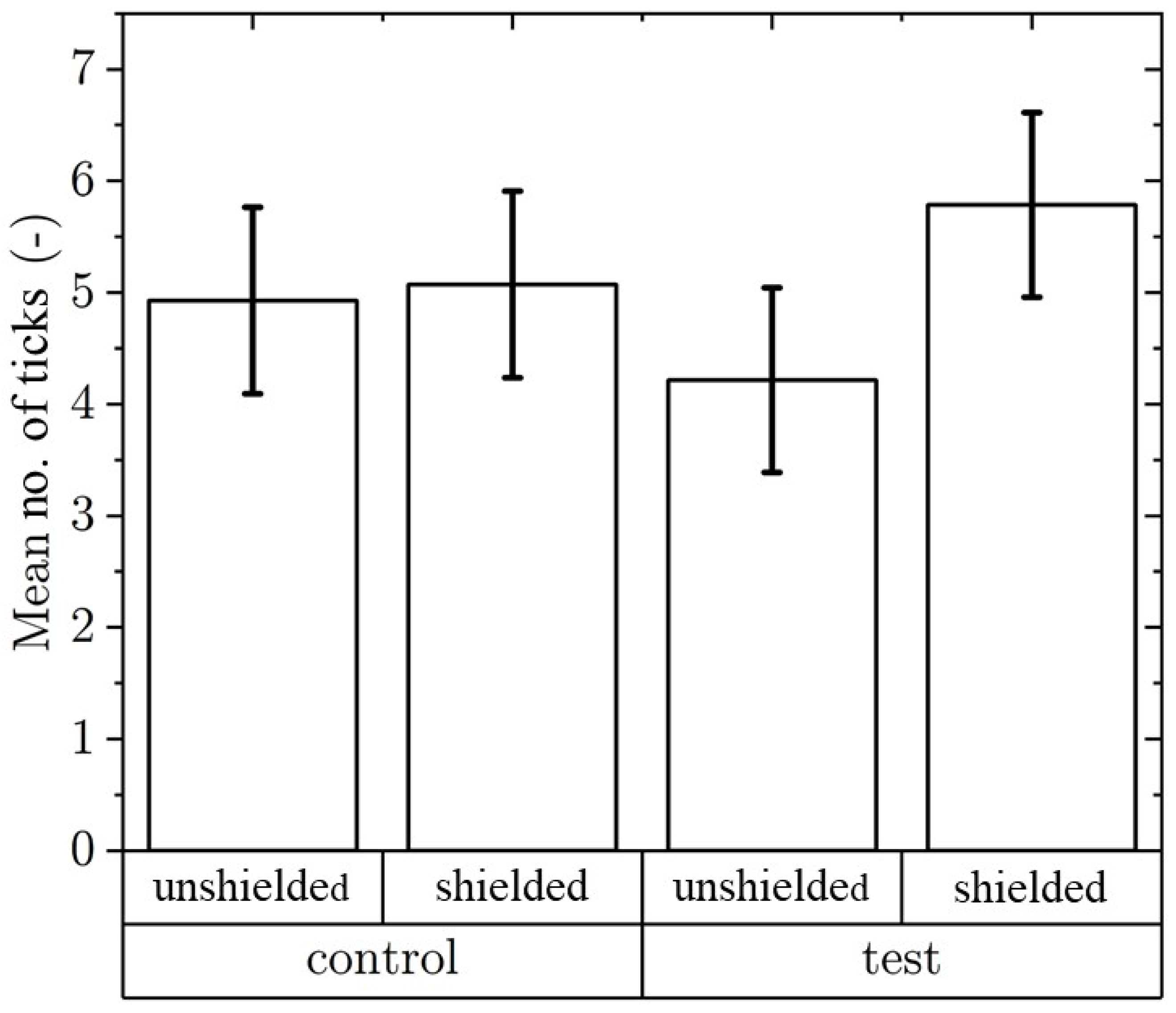
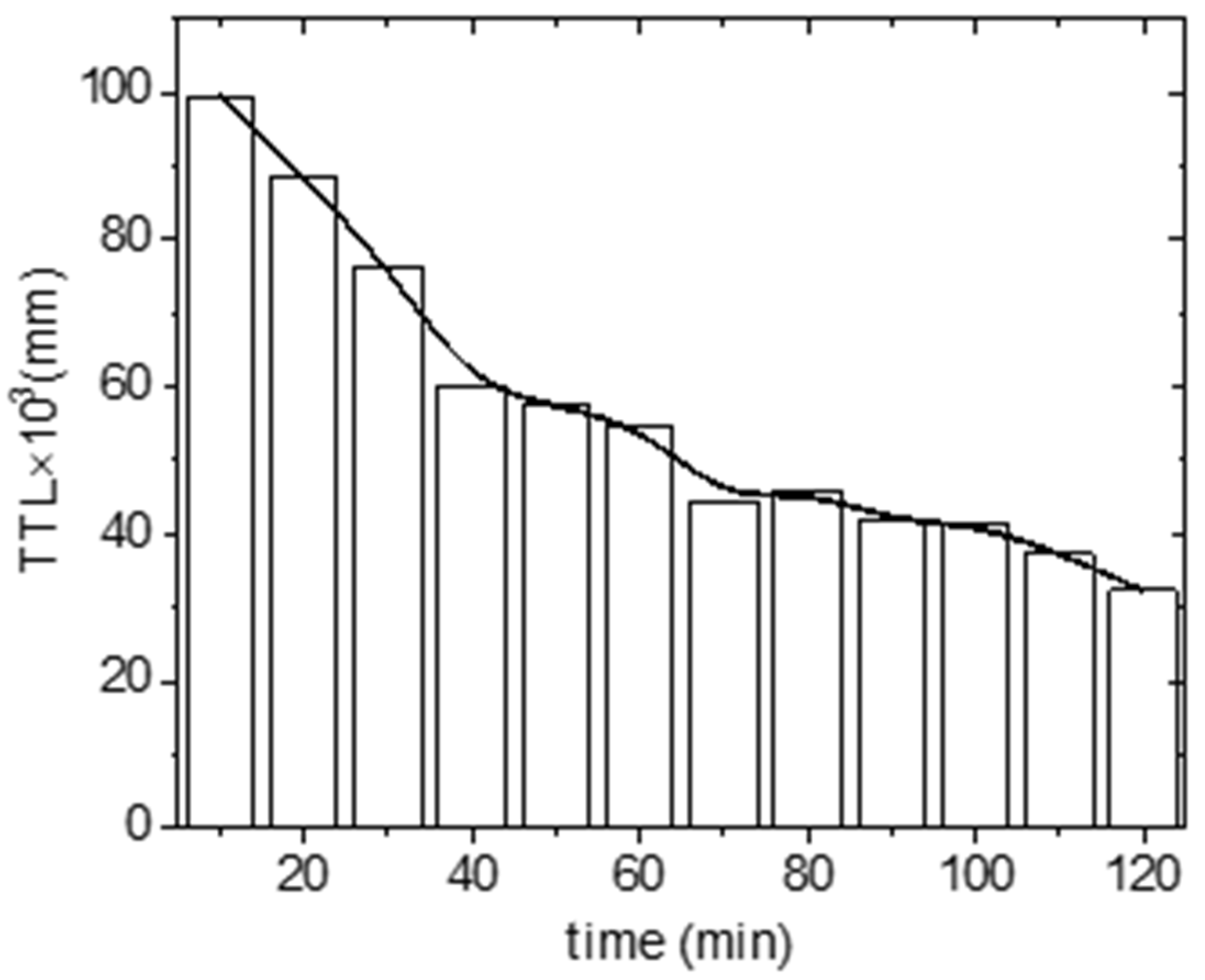
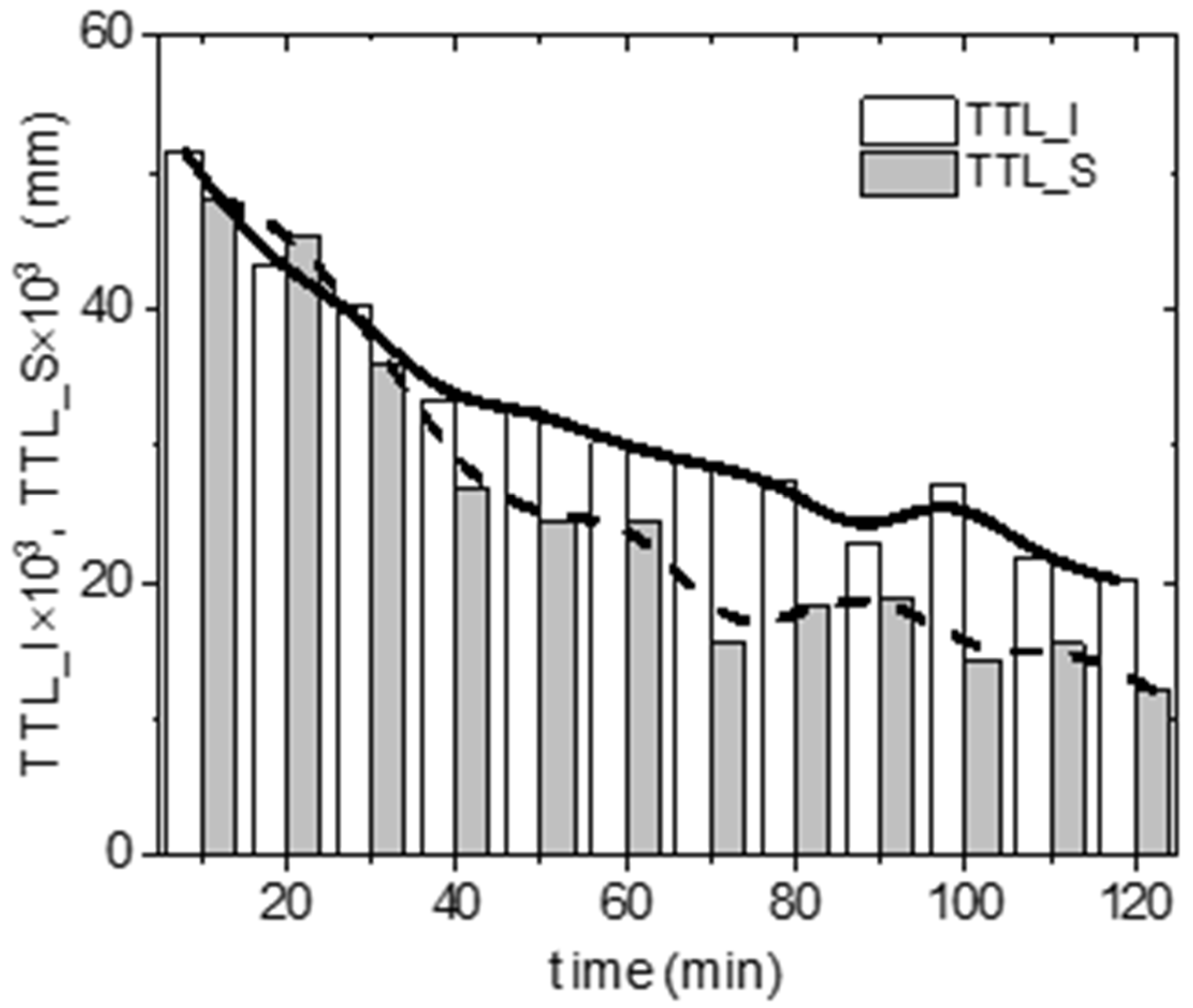
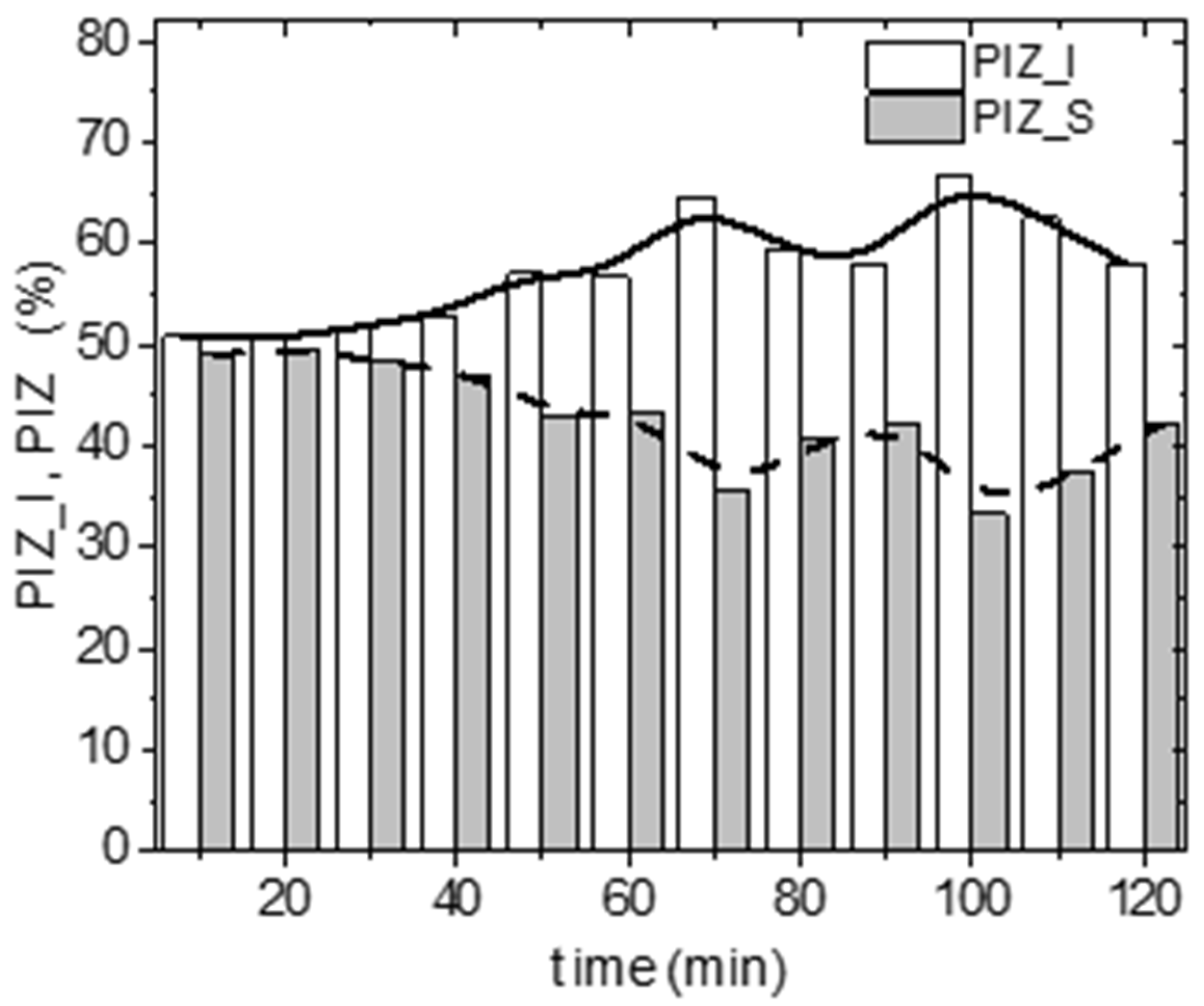
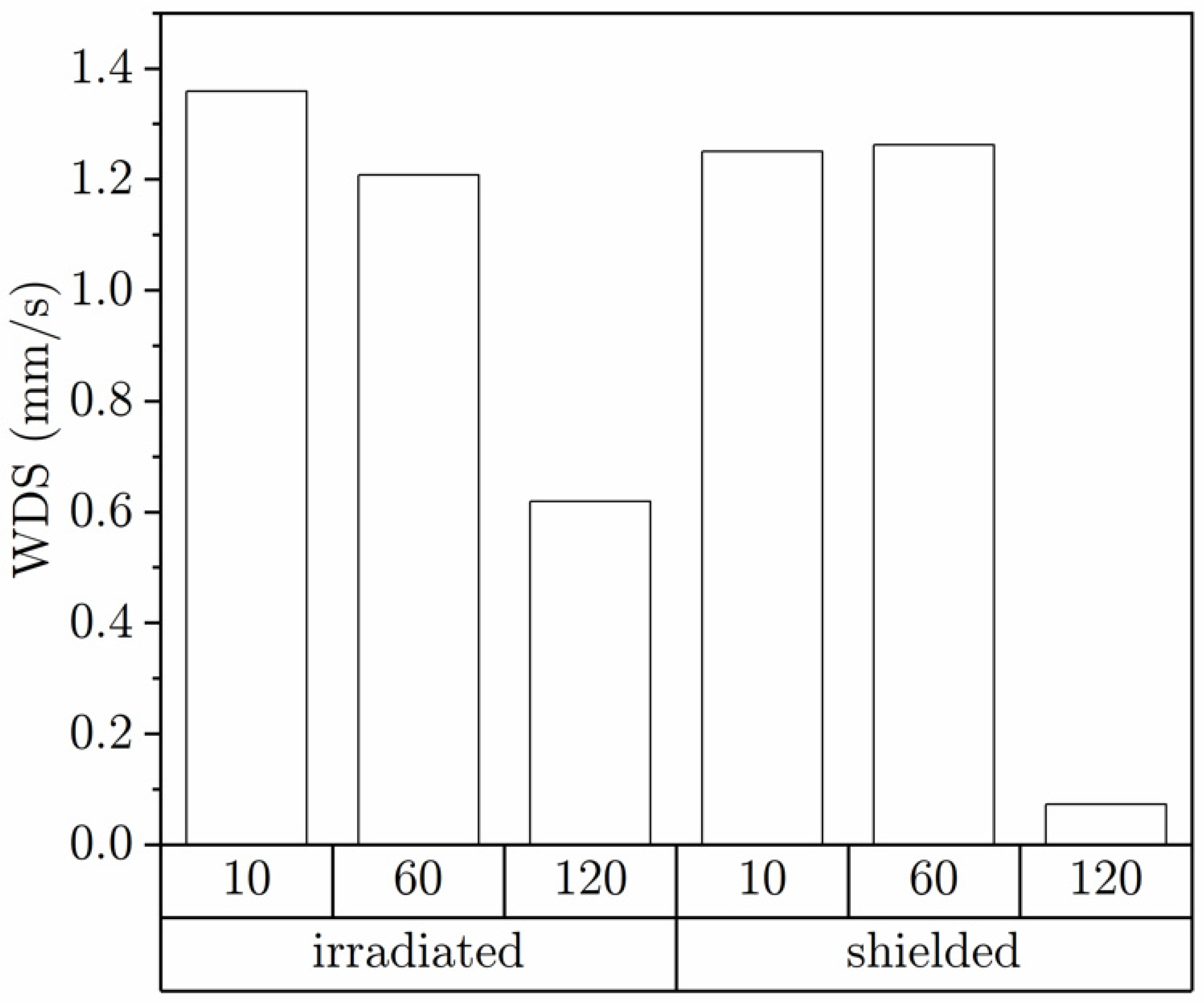
| Trial Time | WDS Median in Whole Arena | Zone | WDS Median | p Value |
|---|---|---|---|---|
| (min) | (mm/s) | (mm/s) | ||
| 10 | 1.306 | Irradiated | 1.359 | <0.001 |
| Shielded | 1.250 | 0.384 | ||
| 60 | 1.232 | Irradiated | 1.208 | 0.183 |
| Shielded | 1.262 | <0.001 | ||
| 120 | 0.508 | Irradiated | 0.619 | <0.001 |
| Shielded | 0.073 | <0.001 |
Publisher’s Note: MDPI stays neutral with regard to jurisdictional claims in published maps and institutional affiliations. |
© 2022 by the authors. Licensee MDPI, Basel, Switzerland. This article is an open access article distributed under the terms and conditions of the Creative Commons Attribution (CC BY) license (https://creativecommons.org/licenses/by/4.0/).
Share and Cite
Vargová, B.; Majláth, I.; Kurimský, J.; Cimbala, R.; Zbojovský, J.; Tryjanowski, P.; Majláthová, V. Locomotor Activity of Ixodes ricinus Females in 900 MHz Electromagnetic Field. Life 2022, 12, 884. https://doi.org/10.3390/life12060884
Vargová B, Majláth I, Kurimský J, Cimbala R, Zbojovský J, Tryjanowski P, Majláthová V. Locomotor Activity of Ixodes ricinus Females in 900 MHz Electromagnetic Field. Life. 2022; 12(6):884. https://doi.org/10.3390/life12060884
Chicago/Turabian StyleVargová, Blažena, Igor Majláth, Juraj Kurimský, Roman Cimbala, Ján Zbojovský, Piotr Tryjanowski, and Viktoria Majláthová. 2022. "Locomotor Activity of Ixodes ricinus Females in 900 MHz Electromagnetic Field" Life 12, no. 6: 884. https://doi.org/10.3390/life12060884
APA StyleVargová, B., Majláth, I., Kurimský, J., Cimbala, R., Zbojovský, J., Tryjanowski, P., & Majláthová, V. (2022). Locomotor Activity of Ixodes ricinus Females in 900 MHz Electromagnetic Field. Life, 12(6), 884. https://doi.org/10.3390/life12060884







